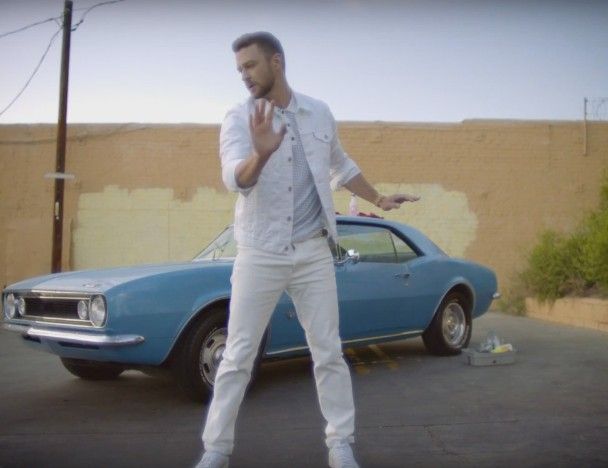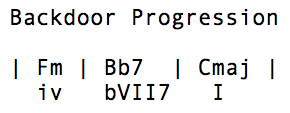Can’t Stop The Feeling (Justin Timberlake) 2/2 – Song Analysis
Learn the songwriting tricks and music theory used in Justin Timberlake's hit song. This is the final part of the 2-part series.

This is part 2 of my analysis of the song "Can’t Stop The Feeling" by Justin Timberlake in terms of music theory and its harmonic content. The idea of these articles is to bring the dry topic of music theory to the real world and help you understand why songs like „Can’t Stop the Feeling“ work and sound like they do. If you want to start at the beginning, then jump right to part 1 of this article. For all others: let’s continue with the pre-chorus here in part 2…
Pre-Chorus (continued)
The last two chords of the pre-chorus are a cadence leading back to the tonic of the chorus. You might ask, how this cadence ( Fm Bb13sus4) can lead back to a C major tonic chord!? After all, these two chords are a ii-V7 cadence in the key of Eb (!). To solve this mystery, let’s first give this cadence it’s name: this is the backdoor progression. It’s called backdoor progression, because it kind of sneaks in to the tonic through the backdoor ;). But why does it work?

The backdoor progression (or iv-bVII7) works for several reasons:
- It has a well known and convincing „inner“ structure: it’s essentially a
ii-V7progression. The ear tolerates this yank to another key, because it recognizes familiarity in this inner structure. In fact you could play almost anyii-V7progression in any key and — as long as you come back to the original key — the ear would tolerate this as a nice spice in your dish. It’s comparable to how stumbling drum fills briefly yank the listener out of the back beat only to drop him back into the groove moments later. - The first chord of the progression (Fm in this song) is still close enough to the key center (C major): F major would be the subdominant in the key of C major and this progression merely changes its mode from major to minor.
- The resolution two half steps up (Bb to C) is very convincing. Although it is deceptive and does not follow the cycle of fifth (a
G7would have been the dominant chord in this case), the ear accepts this move as a natural resolution.
If you want some variety from the default cadences, try the backdoor progression for a change.
Chorus
The tonic hits with bright sunshine coming from the backdoor progression. The choir emphasizes the resolution up two half steps (from Bb to C) by slurring the notes and thus "lifting" the harmony up. We’re now back in the original key of C major and go through the same chords as in the verse. The pre-chorus did a great job to set up the chorus.
Without any interlude, the transition back to the verse is merely accompanied by a "c’mon" by Justin Timberlake…
Verse 2
The verse goes back to a much thinner arrangement. This creates to contrast with the chorus and lets the song gradually build up again towards the second chorus. Letting the energy drop in the verse is a common tool to differentiate verse from chorus, let the song breathe and create room for a new climax.
The chords in the second verse are the same as in the first verse or the chorus. But this time, the verse is twice as long as the first one. I already told you in the "Overall" section, that the reason for the shorter first verse is to get to the first (full energy) chorus quickly (usually around the 1 minute mark, which Justin Timberlake hits spot on here). The second verse is longer, so the second chorus does not hit too quickly and we have time to build to a new climax.
Bridge
After the second chorus, the bridge provides another dynamic contrast, as it breaks down to a very sparse arrangement. This also features the funky base line, that has been pumping throughout the song. Harmonically, the bridge is basically a rearranged chorus — no new chord changes are introduced here.
A nice trick at the end of the bridge is to make it one bar longer than expected. This delays the resolution to the chorus and hightens the tension. If you want your last chorus (or any part) to come in more forceful, consider inserting one (or two or half an) extra measure right before it hits.
Final Chorus + Ending
The final chorus holds no surprises harmonically. The arrangement hightens the feeling of "everyone is happy" and "dance and celebrate with your friends" by featuring a choir for backing vocals. This choir then continues into the ending — a nice trick to make it sound like the audience would sing and party on after the song is already over.
Summary
Justin Timberlake delivered a very well composed, arranged and produced pop song. We can learn a lot from this track in terms of songwriting:
- You can aim for your track to be played on the beach during daytime or in the club during nighttime. But this song proves that it is also possible to create a convincing mixture.
- If you want people to like your song, associate the positive feeling of „you can dance, too, don’t care what others think“ with the song.
- Make the second verse twice as long as the first one. This lets the first chorus hit early without the chorus having to appear too often (and get boring).
- Consider using the chords of the chorus in your intro, to acquaint the ear with the main chord changes.
- Omitting the lower frequencies temporarily creates tension.
- A pre-chorus creates a harmonic and dynamic path from verse to chorus.
- The „re-interpretation“ of chords in the new key is a common tool to modulate to another key.
- Originating in the blues style, the tonic, subdominant and dominant are often voiced like dominant chords.
- Always adhere to the simple rule of keeping some elements the same, while changing some others. Never change everything at once.
- Shifting a voicing up or down works, because the internal structure of intervals in the voicing stays the same, while the key center might change.
- The backdoor progression (
iv-bVII7-I) is a convincing cadence. - Letting the energy drop in the verse is a common tool to differentiate verse from chorus, let the song breathe and create room for a new climax.
- If you want your last chorus (or any part) to come in more forceful, consider inserting one (or two or half an) extra measure right before it hits.
- Make it sound like the audience would sing and party on after the song is already over.
I hope this article and its conclusions can help you in your own musical work. Please also check out my YouTube channel and consider subscribing here to see and listen to the various concepts of my articles. If you’d like to read more about real world music theory, just follow me on Medium or subscribe on YouTube. Share this stuff with your friends and colleagues, if you found it interesting!
About me
I am a piano and keyboard player touring in Germany as well as a music theory enthusiast. Ever since I started making music at the age of three I have been playing, creating, analyzing, understanding, teaching and enjoying music. Feel free to contact me on any question related to music theory or songwriting!